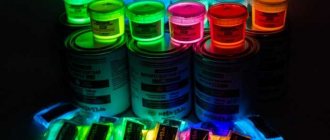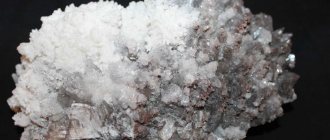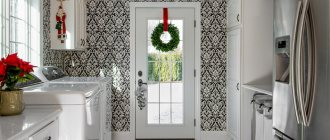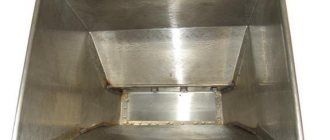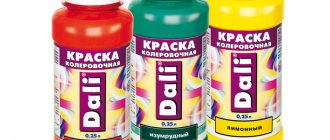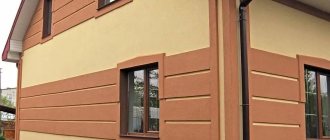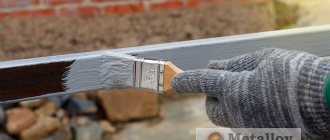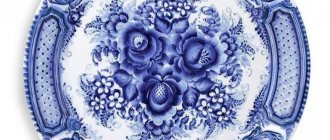Features and characteristics of stained glass paint
Stained glass compositions are paints and varnishes intended for application to a smooth surface - glass, mirror, ceramic or plastic. Using specialized paints, professional artists skillfully decorate the room, creating a spiritual atmosphere in the house:
- paint window and door openings;
- decorate ceilings and partitions with drawings to separate and zone rooms;
- transform wardrobes, mirrors and wall clocks.
Fans of artistic painting paint landscapes and still lifes, zodiac symbols and hieroglyphs, and create ornamental motifs and storylines. They paint ceramic plates, glassware (glasses, wine glasses, vases) and even aquariums. The decorated item can be placed indoors or given as a holiday gift to close relatives and friends.
Stained glass paintings are individual, creative, and have a special, original style. When exposed to sunlight or artificial light, they shimmer in different shades, creating a unique effect.
From polymer clay and stained glass paints, some craftsmen create textured rings, beads or shaped items for bracelets and earrings, magnets, keychains and frames for children's and adult photographs.
Paints for glass and other smooth surfaces are resistant to ultraviolet radiation, temperature changes, atmospheric conditions, and do not wear off or fade over time when applied correctly and with high quality. You can buy them at a stationery store at affordable prices or make them yourself at home using scrap materials.
Stained glass works can be glued to windows.
Where and how is glass painting applied?
By painting on glass, you can create amazing, stylish paintings with your own hands, using all the advantages of the material. Stained glass painting decorates windows, mirrors, various partitions and other interior elements. It is also used to decorate furniture - cabinet doors, kitchen facades. Even large objects will look light and elegant if intricate patterns are applied to them.
Decorate glass furniture in commercial office premises. These could be counters, doors, windows. In an apartment or house, this type of decoration is most often used in the bedroom, hallway, and living room. You can make a beautiful screen in the Hanami style and draw cherry blossoms. Such a zoning element will fill the room with the spirit of the captivating east. You can work with stained glass paints using the following techniques:
- Mosaic stained glass. Characteristic are geometric, floral patterns and carpet patterns;
- Painted. Absolutely all areas of the glass are painted. The paints are liquid, spread and mix, creating stains and new shades;
- Contour filler. First, an outline is drawn and a sketch is created. Then the space is filled with colors;
- Multilayer. Paints are applied in layers of varying degrees of dampness. In this way, the most realistic images are created;
- Spot painting. Contours are used to form an image. The saturation of the dots is changed by color and paint density.
Types of coloring compositions
Stained glass paints for glass differ from each other:
- composition;
- consistency;
- texture;
- color scheme;
- method of application to the surface;
- drying time.
Depending on the type of solvent, several main groups are distinguished.
Water based
Paintwork materials do not have a strong odor and do not streak. They have a liquid consistency, are hypoallergenic, transparent and environmentally friendly, do not harm the artist’s health during the creative process, and do not contain dangerous additives. Acrylic is present in small concentrations.
But there are also disadvantages:
- The compositions do not have bright colors and tone saturation.
- Can be washed off with water immediately after application.
- Over time they can fade. It depends on the chosen brand and manufacturer.
Water-based stained glass paint is most suitable for children, pregnant women and allergy sufferers. With this material you can draw snowflakes on windows before the New Year holidays, decorate plates, small vases, glass glasses, goblets and wine glasses.
The finished product must be baked at high temperatures, otherwise its service life will be short.
Alcohol compositions
Stained glass alcohol-containing paint is suitable for treating smooth surfaces. It is liquid and spreads when poured, but is quite convenient to use and resistant to external influences.
Alcohol-based formulations:
- have a wide palette of colors;
- add brightness and shine to images;
- applied with a brush;
- washed off with special solvents;
- do not require firing in the oven.
Acrylic stained glass paints
They are a type of water-based paint and have richer tones. When mixing different colors on glass, beautiful shades are obtained, no different from those applied by the artist with strokes on canvas or cardboard paper.
The product is not afraid of direct sunlight, humidity, and temperature fluctuations.
It dries quickly:
- after 3-4 hours it stops sticking to your hands;
- After a day, the product is ready for use; it can be wiped with a damp sponge or washed.
The painted composition does not require firing in an oven, but to increase the wear resistance of the composition, a layer of acrylic varnish should be applied on top.
Acrylic paints are one of the varieties.
Varnish coatings
They are also called solvent. They are created on the basis of organic resins and are diluted only with special solvents.
Varnish paints are used for:
- decorative design of building signs, walls, windows, doors, mirrors;
- furniture painting;
- painting on canvas or glass;
- performing artistic works in mixed media;
- painting glass, plastic or porcelain objects.
Material:
- has good adhesive properties;
- spreads evenly over the surface;
- after pouring does not require additional heat treatment;
- does not wash off;
- does not wash off;
- does not crumble.
After complete drying, which lasts for at least 10 days, the coating is even, smooth and durable, the image becomes clear and original. During the first 3 days, it is not recommended to touch the painted object with your hands.
The main disadvantage is the unpleasant odor emanating from the solvent. When working with the substance for a long time, susceptible people begin to feel unwell and may have an allergic reaction to varnish paint. Therefore, you need to wear a respirator and ventilate the room.
Other types
Glass paints come in the following types:
- Sticky. Water-based or acrylic. Colors can be mixed to create new shades. How to use the product:
- attach a transparent vinyl film to the stencil;
- outline the image;
- paint a pattern inside a limited area;
- wait until the material dries;
- separate the drawing from the film;
- stick to the surface.
- Silicate. They are evenly distributed over the coating, creating a shiny, smooth layer that does not crack when dry. During firing, sintering occurs with the glass; after heat treatment, the painting becomes matte, durable and resistant to external factors.
- Chandeliers. The main feature is the presence of a metallic sheen.
- Foaming (volumetric). During firing, the coating delaminates, visually increasing the volume several times. It is enough to dry the stained glass with a hairdryer or keep it in the microwave for 30 seconds.
- Granular. When baked in the oven, the paint spreads, forming small bubbles on the item being decorated.
- Mother of pearl. They are transparent, applied as an additional layer on top of the base layer to give a radiant effect.
- With additives. Loose glitter in the form of stars, hearts, and flowers is added to paintwork materials for deep shimmer and volume.
- Matting. The paint is translucent and has a delicate pastel tone.
- Crystal. They have a light shade, a little cloudy. After drying, the material becomes invisible, but when sunlight hits the stained glass window, it shimmers with rainbow tones.
- Marble. Imitates the matte finish of the treated surface.
- Craquelure. The effect of small cracks is created, which gives the decorated product a romantic look of antiquity.
- Relief (contour). They are applied to determine the drawing area and create boundaries and relief on the product.
- Pearl. Using paint squeezed out of a tube, pearls of different sizes are formed.
- Liquid enamel. Before working with the material, water is first applied to the surface, then patterns are made using enamel.
- Structural. A paste-like substance, when applied, an unusual structure is formed. For example, the finishing layer is made of stone or leather.
Types of compositions and recommendations for selection
Stained glass paints come in many varieties. They come in matte and glossy. Most often, the material is made indelible. Such dyes are considered waterproof. They may be sold in aerosol cans or bottles. Aerosol dyes are easy to apply and help paint large surfaces.
Acrylic
This is the most popular type of dye. This material is used quite often because it is odorless, dries quickly and produces rich shades. The dyes mix easily with each other. This helps to obtain new tones.
If a lighter tone is required, you should add a special thinner to the dye, which is used for artistic paints.
Acrylic paints do not need to be fired. However, to increase wear resistance, they can be coated with acrylic varnish. Such dyes are resistant to water. They do not fade under the influence of ultraviolet radiation and normally perceive temperature fluctuations. Acrylic paints for stained glass painting are ideal for beginners.
See also
Technical characteristics and composition of PF-115 enamel, purpose and consumption
The advantages of such materials include:
- quick drying;
- resistance to moisture after drying;
- safe composition;
- possibility of combining different dyes.
However, dyes also have disadvantages:
- not very bright colors;
- thick texture;
- the need to check the work for unfilled areas.
Varnish
These paints have a thick consistency and a rich, pungent aroma. Since they are characterized by a varnish base, the finished painting does not require firing. The coating takes quite a long time to dry. This takes several days. After which the surface can be washed. If frequent cleaning is required, it is recommended to coat the glass with a varnish with strengthening properties.
If you need to thin the paint, you should use a solvent from the same company.
Other substances may deteriorate the material. Therefore, thinner is usually included in the paint set.
These dyes have the following advantages:
- high durability;
- bright colors;
- no need for firing;
- moisture resistance.
At the same time, the substances also have a number of disadvantages:
- pungent aroma;
- the need to use a thinner of the same brand;
- long drying period.
Water based
Such substances are considered completely safe and have no pronounced odor. This type of dye has a transparent texture and liquid consistency. They are considered environmentally friendly and can be easily washed off with water before drying. Water-based dyes can be used for children. The materials help to obtain a transparent pattern that can be applied to windows.
All water-based dyes must be fired. This means that after complete drying, the finished product must be placed in the oven and baked for a certain time. The specific duration and temperature conditions are indicated on the packaging.
The advantages of water-based dyes include:
- safe composition;
- no pungent odor;
- transparency;
- liquid consistency;
- Possibility of application to windows.
However, the materials also have a number of disadvantages:
- need for firing;
- not too bright shades.
Alcohol
Such dyes are considered the most resistant to external factors. They are perfect for beginners. It is permissible to apply the alcohol composition with a brush. However, to remove it you will need a special solvent. Dyes allow you to create a bright and shiny design. There is no need for firing to fix the design.
Alcohol paints have many advantages:
- bright colors;
- glossy shine;
- uniform distribution over the surface;
- no need for firing;
- Possibility of application on large surfaces - walls, doors, windows, mirrors.
At the same time, the substances also have a number of disadvantages:
- long drying period - this requires 10 days;
- inability to heat;
- the need for gentle drying - this must be done in a clean room in a cardboard box.
What other types of stained glass paints are there?
Glass paints are divided into 2 groups depending on subsequent processing:
- fired;
- unfired.
Burnt
The compositions are purchased in specialized stores. The container bears a label with the inscription Porcelain or Porzellan.
Products with paint applied to glass must be thermally baked in an oven or oven. The firing temperature varies from +120°C to +180°C, the duration of the procedure is from 30 minutes to 1.5 hours. The parameters depend on the characteristics of the paintwork material, brand and manufacturer.
Main advantages:
- high strength;
- uniformity of coating application;
- contains water, so brushes can be washed without solvents;
- no smell.
The disadvantage is that after drying in the oven, the colored areas become opaque, matte and slightly cloudy. After heat treatment of glasses or wine glasses, the back wall of the product cannot be seen.
Unfired
Such compositions are widely in demand due to their simplicity and ease of use. They have beautiful tones and form a durable, indelible film. Paints use a solvent. Drying time is at least 3 weeks at room temperature.
After hardening, the coating can be washed without special products or pre-soaking. If you need to erase a drawing, use a solvent.
Disadvantages of working at home with burnt paints
Firing is best done in special kilns. Artists do not always have the opportunity to organize the procedure at home. In addition, professionals who know how to correctly carry out the procedure should work with paintwork materials subjected to heat treatment. During the process, you should be careful not to get burned yourself or injure your loved ones.
Unfired set of stained glass windows.
How to paint with stained glass paints on glass: pipette or brush?
The beauty of stained glass paints is that they can be applied not only with a brush, but also with a pipette, which depends on the base of the material and the height of the paint.
With a pipette, for example, it is convenient to fill large spaces, and then use a brush to distribute the paint over the surface. At least that's how I work... I got the hang of it and the work goes faster and more interesting! The surface is even, smooth, just like real colored glass! But mostly, stained glass artists work with a brush.
In the photo I am pouring paint with a special pipette, but you can take a regular pipette from the pharmacy
It all depends on the final result that you want to see at the end of the work. It’s up to you to decide whether to choose a brush or a pipette... In any case, you need to try both to understand what works best for you!
If you are a beginner, then it will be useful for you to know that stained glass paints come in different bases. And before you go to the store and make a choice, it would be nice to figure out what and how.
Selection of stained glass paints
Paint for working with glass surfaces is selected depending on individual preferences, the level of skill of the designer, and the purpose of decoration.
If you need to create a beautiful picture on a glass or fabric base, or paint a large showcase or doorway, use varnish enamels.
For beginners who are just starting their creative journey, decorating with water and acrylic compositions is recommended.
When are acrylic compounds best suited?
Acrylic is very popular among arts and crafts enthusiasts. It will suit:
- For children. The paint is safe and non-aggressive. It is used during painting training.
- For temporary application. The product is easily washed off with water and thinners, and is used to decorate the room before special events and events. Apply to windows, doors, shop windows.
- For artistic decoration of small items - dishes, bottles, sets. The products are decorated with interesting motifs and ornaments, and congratulations are written on them. For painting use wide and thin brushes.
- For processing large surfaces. Purchase branded paints in aerosol cans. To avoid drips and other defects, strictly follow the instructions on the label when spraying. During work they use personal protective equipment.
Features of application to glass
You can apply paint to a glass product in the following ways:
- By dipping. The object is dipped into the dye bath and then removed. Excess liquid drains off, leaving the coating in the form of a thin film.
- With a roller. The easiest way to paint large glass areas in a single color. The roller is passed repeatedly, resulting in a uniform and homogeneous layer.
- With a brush. Used to fill limited spaces and apply color spots. The patterns are multi-colored, multifaceted and beautiful.
- Spray with a spray gun or aerosol can. Large panels are painted. The work is done easily and in a short period of time.
Technological features of applying a pattern on a smooth coating:
- Before work, buy paints. For beginning artists, non-fired compositions are suitable.
- Prepare all tools and consumables. The absence of at least 1 component will negatively affect the result.
- Be sure to choose a pattern, copy it on the Internet or take it from any coloring book, and make a sketch. You can use a ready-made template, which you can purchase at an art or construction store.
- Degrease the surface to be treated. Greasy human fingerprints often remain on dishes and should be removed. Alcohol is used for these purposes.
- Inside the dish, attach or tape a stencil or a hand-made sketch to the glass.
- On the outside, using a marker or felt-tip pen, draw the outline of the image.
- Outline each area with contour paint, connect the ends of the lines so that there are no breaks, and subsequently the liquid does not leak out.
- Let dry.
If painting on glass is done with acrylic, contour lines may not be drawn. Without outlines, the pattern will look like a work of art made with your own hands; when applying relief borders, it will look like a stained glass window.
The main stage is painting the colored areas. The paint is applied using the drop method, then with a brush the substance is distributed over the surface from the center to the periphery in a thick stroke. Manipulations are performed first with one color, all corresponding areas are painted, then the dye is washed off from the paint brush, wiped it and moved on to another shade.
Paint application process.
DIY glass painting
An ordinary person, who has not even studied the basics of decorative and applied art, can engage in this type of artistic creativity. Painting on glass at home has become possible thanks to the simplification of technology, a large selection of materials for work, their low cost, and the ability to use stencils.
You can draw on a glass surface yourself at any age, even together with all family members. With each new craft you will gain experience. In the future, the acquired skills will allow you to create a magnificent, original design on the surface, turning a nondescript glass vessel or object into a masterpiece. The main thing in this matter is patience and accuracy.
How to prepare glass for painting
Having firmly decided to bring the idea to life and start painting on glass, you first need to choose an object that will be the basis for the work, be it a window, glass, bottle, plate, mirror or other objects. For beginners, it is better to use a base with a flat, smooth surface, since it is difficult to work with curves and convex places, the paints spread on them, and a complex design may look bad and may not meet the design or requirements placed on it.
Having decided on the element, it is necessary to prepare its surface. If the craftsman is satisfied with the color of the product as the main background, simply wash it with soapy water, then rinse with clean water. If there are labels, the glass object should be immersed in hot water for a quarter of an hour, then remove any remaining glue. To prevent lint from the towel from remaining on the glass, it is better to let it dry on its own. When the item is completely dry, it must be degreased; this can be done using an alcohol-containing liquid.
If you want to change the background color, after all the preparatory operations, you need to cover the surface with a special layer of primer (primer) and wait until it dries. Next, apply two layers of acrylic paint of a suitable color. The next layer cannot be applied until the first one is completely dry. At the final stage, the glass element is varnished.
How to transfer a drawing to glass
Having decided on the image, the next step is to display the design on the glass. There are several ways. The fastest way is to immediately draw a picture on the glass surface. However, only a specialist who is confident in his abilities can do this. It is better for a novice master to use the following simple techniques:
- Place the sketch under the glass. Having placed the image under the glass surface, use a contour on the glass to redraw it from above. This method is perfect for flat, smooth, transparent objects. If the element has a round, complex shape, where it is impossible to attach the paper, even using tape, it must be slightly wetted in water, after which it will become pliable, take almost any shape, and will stick well to the glass without additional clamps.
- Copy paper. For opaque objects, bottles with a narrow neck, and mirrors, a paper pattern is unacceptable. In this case, it is better to use a carbon copy. The main thing in this method is to attach the sketch and carbon paper well to the surface of the object. If the image accidentally moves, the work will have to be done again.
- Cling film. A piece of cling film is placed on top of the prepared drawing, and for reliable fixation it must be larger in size than the sketch. Using a glass marker, draw contours along the surface of the packaging material. Next, the film with the translated image on the front side is fixed on a glass object so that there are no voids or folds between them. Using a bamboo stick and a gel pen, carefully trace the contours. As a result, the marker will be transferred to the glass.
Stencil technique
Stencils allow anyone to paint on a glass surface, even if they are very bad at drawing. At the same time, finished products can be bought at specialized retail outlets, but many craftsmen prefer to make them themselves, which allows them to choose any image they like. To do this, just lay a sheet of loose paper over the drawing, trace the contours, and cut out the blank along them. Let's look at step-by-step instructions on how to work with templates:
- We prepare the surface of the selected object, degrease it.
- Lay the stencil evenly on a plane. Using tape, we fix it in the corners and around the perimeter. You can also use temporary spray adhesive to avoid accidental shifts of the template, which can negate all the work done.
- Now we begin painting (for this method you can use stained glass and acrylic paints). Apply the coloring agent to the surface.
- It is better to paint from the borders to the center; you need to pick up the paint little by little, apply it in a thin layer, removing smudges and excess with a napkin.
Point technique
This method is also called point-to-point. To draw an image using a non-traditional drawing technique, you will need to purchase contour paints. It is better to start getting acquainted with this species on simple, unnecessary objects. Let's look at a simple master class on applying a dot pattern in the form of a flower to the surface of a glass:
- We take a ready-made sketch of the required size. It can be printed on a printer, cut out from a magazine or book.
- Using temporary spray adhesive or soaking the paper in water, fix the image on the inside of the glass.
- Degrease the outer surface of the container.
- We draw dots along the contour of the drawing, preferably of the same size, and they should be evenly spaced from each other. For work you can use any colors you like.
- Having outlined the outline, we begin to fill out the drawing. Dots are also plotted here. To do this, you can use a different color or shade of the main one.
- After the paint layer has completely dried, it is advisable to apply a colorless varnish to the picture.
Contour technique
For work use contour paints. Initially, the drawing is outlined, and after it dries, the internal voids are painted over. This method allows you to divide the process into several stages and make a detailed drawing of the picture. For clarity, let’s look at a master class on drawing contours on the surface of a plate:
- We prepare the surface of the kitchen utensils.
- We apply the prepared stencil, using a marker we transfer the outlines of the image onto the plane of the object.
- Having removed the template, we begin to apply contour paints to the resulting lines. It is better to use a thick composition, with its help you can create the smoothest lines.
- To avoid line joints when working, semicircular and curved boundaries must be drawn in one motion. Straight lines are the most difficult and require some skill.
- In the body of the image itself, you can additionally draw different patterns and curls.
- After the outline has completely dried, you can begin painting.
Stained glass painting
There are several techniques for simulating artistic stained glass: photo printing, film stained glass, poured glass, artistic painting. We will study the first methods a little later. Let's take a closer look at the last option. Let's look at how to paint a window using stained glass paints:
- We prepare the base and degrease it.
- We apply the prepared template to the glass surface, fix it, and trace the contours with a pneumatic marker.
- Using black acrylic paint, draw the marked lines.
- After complete drying, use a brush to paint over the empty cavities of the picture.
- Stained glass paints are distinguished by the fact that they spread a lot, so it is not recommended to apply another color before the previous one has completely dried, in order to avoid the possibility of mixing colors. It is also better to use varnish substances based on organic resins for work.
- After completing the drawing, it must be completely dried naturally. If you use a hairdryer to dry it, the paint may subsequently crack or darken.
- At the final stage, when the surface is completely dry, it is necessary to coat it with colorless varnish.
When changing colors, you must thoroughly wash the brush and wipe it with a cloth.
Filled stained glass
The best way to imitate real stained glass. For work, it is advisable to use contour and stained glass paints from the same manufacturer. On large surfaces, you can use stained glass lead tape, which will also prevent coloring substances from mixing and spreading over the surface. Let's look at the step-by-step instructions for making stained glass on glass for an interior door:
- We create a sketch ourselves. If we don’t have the skills, we download ready-made projects online.
- We attach the selected pattern to the bottom of the prepared base and secure it with tape.
- Draw all the lines on the surface of the glass using a contour. The height of the contour mixture depends on the planned thickness of the paint layer, which affects its transparency.
- Having dried the workpiece, we proceed to filling the resulting cells. This can be done with a brush, or more quickly using a syringe. It is necessary to fill from the edge of the line to the center. We carefully remove the leaks.
- The cells must be filled one at a time. Upon completion of painting, the structure is dried, after which it can be installed in the doorway.
Marbling
A fashionable new technique for decorating glass objects. Both flat glass and voluminous candlesticks and various glasses are suitable. With this simple technology you can create unique things. This master class will tell you how to decorate a set of glasses:
- Fill a deep container with water, drop a few drops of paint into the center for marbling;
- When the dye spreads over the entire surface, drop in another color, then a few more different ones and dilute;
- Stir with a long wooden stick, forming a beautiful pattern;
- When the pattern is ready, carefully take out the stick so that the paint does not drag on it;
- We degrease the wine glasses using a rag and alcohol, seal the top edge with construction tape and immerse the objects one by one in water;
- The glasses must be moved in the water, as if winding a pattern.
Painting with film paints
To work, you will need film paints of the required colors, acetate film or a regular file if the template is small. We place the drawing under a transparent film and trace its outline using a special modeling outline. Any unevenness can be corrected with a simple toothpick or match. Now the picture should be left for 12 hours to dry.
We paint the drawing with film paints, stretching them with a brush or toothpick so that they come into contact with the outline. After complete drying, up to 24 hours, the painting can be removed and transferred to any glass interior item. It is better not to decorate outdoor windows in this way, since their surface can collect condensation.
How to pin a picture to a stack
After finishing the work on applying paint to the glass, the picture must be secured. To do this, you can use various varnishes and a special spray. Stained glass mixtures based on water or solvent are coated with transparent varnish. If you don't have such material on hand, you can use hairspray that is transparent for nails.
There is no fixer for film paints, but such an application can simply be removed and transferred to any other place while wet cleaning takes place. Paints for firing can be cured in a conventional oven.
The best manufacturers of stained glass paints
Among the wide range of paints and varnishes on the market, compositions from the following brands are suitable for glass painting:
- Lefranc&Bourgeois (France). They are available in 22 colors and 2 mediums (craquelure and matte). Packaged in 50 ml jars. With prolonged use they tend to dry out and thicken. Solvent based paints. The coating is smooth and glossy. It has good adhesion to metal, glass, and tiles.
- Pebeo (France). The manufacturer produces 4 series (3 main and 1 additional) for glass coloring:
- Vitrail – a palette of 26 intense solvent-based colors that do not require firing, sold in 45 and 250 ml bottles;
- Vitrea 160 – 30 shades from transparent to moiré and matte, 10 – embossed with frost effect in tubes, created on a water basis, hardening at a temperature of +160°C is required;
- Porcelaine 150 – 46 bright, transparent and matte colors, sold in 45 ml containers, applied to glass, porcelain and ceramic surfaces, mandatory baking at +150°C;
- Touch Deco - to add volume and achieve a metallic, pearlescent or antique effect.
- Marabu (Germany). The compositions are transparent, homogeneous, of good quality, and spread easily over the base coating. They do not require fixation by baking. You can buy it in a small container (15 ml) at a low price, which is profitable and convenient for artists who decorate small compositions.
The best contour manufacturers:
- Decola;
- "Tair";
- Pebeo;
- Lefranc&Bourgeois;
- Hobby Line.
One of the best manufacturers is Decola.
How to mix stained glass paints and get new shades?
Unfortunately, not all manufacturers of stained glass paints have such a large selection of paints as the French Pebeo Vitrail, for example. Don't despair, because paints can be mixed to get the desired shade!
To obtain new colors and shades, use a special container with indentations. Although you can get by with regular plastic bottle caps and other available containers.
Old cream jars make excellent containers for mixing paints.
Start mixing with a small amount of paint... it is important to remember that dark colors are easier to create than light colors. In any case, knowledge and skills come with practice. Try mixing and creating your own interesting colors and shades!
Ready-made sets
Experts in the field of stained glass art recommend that beginners purchase ready-made kits. It is better for novice decorators not to buy the main components and additional accessories for creativity separately; you can choose materials that do not match the parameters.
The standard ready-made kit includes:
- base with a contour applied;
- stained glass paints;
- palette knife or brush;
- color scheme.
Some kits contain sparkles or rhinestones, others include a clock mechanism with hands and pendants for making your own wall clock in stained glass style.
How to work with stained glass paints
Painting objects with painting materials is an art that does not require professional skills, but knowledge and experience will not hurt. Beginners can first use a simpler painting technique, then move on to complex execution options.
Types of stained glass techniques
In artistic representation, glass painting can be:
- Spot. The technique is old, but thanks to the simple application of enamel it has never gone out of fashion. Many decorative artists use it to decorate dishes. It consists of applying dots that do not touch each other in the form of a pattern or ornament on glass.
- Contour. Borders are drawn on the sketch and all fragments are painted over.
- Without contour. Paints of different colors are poured onto the coating, spread over it, mixing with each other and forming abstract designs.
- Multilayer. Layers are superimposed to form three-dimensional images.
Stained glass styles:
- Divorces. It is used for mixing different colors from the same manufacturer with a colorless composition and applying a liquid mass. The coating has a marble effect.
- Double stroke. If you want to get 2 shades in 1 stroke, dip the brush on one side in a dark color, on the other side in a light color, then make a stroke, alternately turning the tool.
- Ombre. Drawing is done with a sponge. The image is similar to Victorian plaster.
- Tiffany. The outline of the pattern is marked with a felt-tip pen, then the coloring agent is carefully applied. The surface is treated with varnish. The result is a 3D drawing.
- Gzhel. 2-color technique using white and blue enamel.
- Khokhloma. It is used for working with wood, but some craftsmen can also work with glass. Black, red and green patterns are made on a yellow background.
- Petrikovka. Spectacular and captivating: beautiful flowers, fabulous animals or birds are depicted in black or gilded form.
- Gorodets painting. The theme concerns rustic interiors and rural life. The compositions feature a hut, household items, villagers working in the fields, a forest, and berries. The picture is bordered with white or black color.
- Vanguard. Simple geometric patterns (squares, triangles), random lines, and blots are applied to the glass.
- Inscriptions. The simplest version. Painted symbols, hieroglyphs, and zodiac signs look fashionable and stylish. Beginners can paint names and words of congratulations on bowls and glasses.
Tools and consumables
For creativity you need:
- Paints. The color is chosen depending on the pattern and individual desires. Beginning craftsmen are recommended to purchase non-fired compositions. They are easier to work with.
- Contours for glass. They can be sold in sets or individually. The color range is wide. They are a thick mass in tubes with a thin tip. Designed for drawing outlines, creating relief, also used in dot painting.
- Marker or felt-tip pen for sketching patterns on the surface.
- Acrylic lacquer. Used to fix dye.
- A stencil, template, drawing or sketch applied to transparent glass.
- Water, thinner or solvent. Selected according to colors. The rules of use are located in the instructions on the label of the jar or tube.
- Acetone or alcohol. For degreasing glass coating.
- Cotton swabs and swabs. For wiping excess enamel from the surface being treated and wiping the brush.
- Needle or toothpick. To get rid of air bubbles that appear on the item being decorated.
- Palette. For mixing colors.
- Several types of artistic brushes.
- Oilcloth. To protect the workplace from ingress of coloring material.
Step-by-step instructions for painting stained glass
Drawing a pattern with acrylic paints on glass is carried out in the following sequence:
- Lay down newspaper or oilcloth so as not to stain the furniture you will have to work on.
- Take the sketch and put it on the table, place the glass on top. If a stencil is used, it is placed on the surface.
- Trace the outlines with a felt-tip pen.
- Apply special contour paint exactly along the lines, squeezing it out of the tube.
- Wait 30 minutes for it to dry.
- Take a palette, mix colors on it and get the desired shades.
- Apply paint to each outlined area.
- Remove shortcomings during the work process.
- Leave the product to dry completely at room temperature.
- Cover the product with acrylic varnish.
Additional recommendations
To get a high-quality and beautiful drawing, you should consider some nuances:
- Patterns on glass glasses and wine glasses should be applied on the outside. Do not let your lips touch the edges of the treated surface while drinking.
- When firing, the painted dishes are placed in a cold oven and gradually heated to the required level. Heat treatment time and temperature are indicated in the instructions for use. Objects with stained glass are left in the oven until completely cooled, then removed. Do not bring the temperature to too high, otherwise the enamel will turn brownish.
- If, as a result of creativity, errors and flaws are obtained, they are removed with a cotton swab or swab immediately, before the material dries.
- When bubbles filled with air appear on the coating, they are pierced with a toothpick or a sharp needle.
- You can speed up drying by blow drying.
- Containers with coloring compounds should not be kept open. They will quickly dry out and deteriorate. It’s better to take a palette and apply the product to it, mix colors and get new individual shades.
- Keep art brushes in water during creative work, otherwise the enamel on them will harden. The tool will become unusable. The paintwork materials will have to be cleaned with a solvent or thinner.
- After use, the container is not left in the room; it is thrown away unopened.
2 tips on how to remove glass paint from clothes:
- Safe, but not always feasible. Soak the dirty item in cold water for a day, and wash it with laundry soap the next day. Chunks of dye may fall off.
- Aggressive, but has a 100% cleaning result. To remove stains left after artistic activities, you need to take cotton wool and soak it well in acetone or a mixture of acetone and turpentine, then saturate the contaminated area with it and rub with ammonia until the dirt disappears.
Precautionary measures
Working with stained glass paint requires the decorative artist to take the following precautions:
- When using water-dispersed and acrylic compositions, work with gloves and a special apron, despite the hypoallergenic properties of the material.
- Before working with aerosols or enamels containing toxic solvents, wear personal protective equipment.
- If chemicals come into contact with your hands or eyes, rinse them with plenty of water; in case of complications, consult a doctor.
- Dry the treated products in a well-ventilated area.
- Store containers with dyes in a secluded place, inaccessible to children, away from sources of fire, heating and heating devices.
Precautions must be taken.
Decorative glass painting
The first drawings and ornaments that a novice artist applies to a glass surface should not be too complex. If a child is drawing, you can invite him to depict a flower, a butterfly, decorate the product with clouds and the sun, draw rain, etc.
Making simple strokes and lines will also help an adult who has never done drawing before. You can use contour drawings as a template by placing the template under clear or frosted glass. Having outlined the dark lines, the middle is painted over with a single tone.
Technique
For glass painting, similar techniques are used:
- simple contour filling;
- Tiffany - creating a continuous pattern from individual elements, each of which looks like a piece of a mosaic;
- stained glass painting - done with special paints (transparent), each part of the picture is a dark outline filled with 1 tone.
The work begins with preparing the glass. For your first experiments, you can paint a glass jar, turning it into a vase. To easily remove the label from the product, you need to soak it in warm water with detergent. The container is then washed and dried.
If a flat glass plate is used, then after removing the dust with a dry cloth, you can simply treat the surface with alcohol or vodka, glass cleaner, and wipe until dry.
For painting, it is better to choose high-quality paints, for example, from Olki or Decola.
Prepare for painting:
- paints and palette;
- several brushes (one for each shade);
- stick or spatula for mixing paints;
- solvent containing acetone;
- acrylic clear varnish.
The prepared base is painted in the following order:
- Using a thin brush, apply the contours of the design, placing the sketch on paper under the plate. If the Tiffany technique is chosen, small rounded contours are drawn that make up a large detail of the painting (for example, the background). The elements of the design can be whole, if they are small (petal of a small flower, etc.), their shape can be any. When all the contours are drawn, the product is left to dry for the period specified by the paint manufacturer. If a volumetric outline was used (draw it without a brush, squeezing a strip out of the tube), you need to completely dry it before painting.
- Fill the inside of the outline with paint of the desired shade. When painting in the Tiffany style, you can make 2-3 strokes in different shades of color in 1 mosaic element. This will give the drawing expressiveness and create a volume effect. For stained glass, the inside of the contour is filled with 1 shade. If you are painting an object with a shadow, make several strokes with a darker shade of the paint with which the element is filled.
- The finished product is dried and varnished. To make the design even more resistant to moisture during cleaning, the product can be heated in the oven. The glass object is placed in a cold cabinet, and then it is turned on, the temperature is brought to +150°C, it is turned off and the glass is left to cool in the oven.
Making stained glass paints with your own hands
You can make paints and varnishes for painting glass yourself without extra costs from scrap materials, such as manicure polish or PVA glue.
Nail polish based
Making paint mixture is not a difficult task. High-quality dye is prepared from:
- BF-2 glue;
- nail polish;
- any water-based paint.
Pour the ingredients into the container in a 1:1 ratio and mix well. Dilute the composition with paint. To obtain the required color, use a pipette: add 1 drop of coloring agent to the thick mass and mix.
The resulting substance lies smoothly on the surface, dries quickly at room temperature, does not crack or crumble.
Why shouldn't you touch the surface of varnish-based paint?
If you have made your choice in favor of stained glass varnish paints , you need to remember one rule as an axiom: solvent-based stained glass paints take a long time to dry!
Any touch in the first 30-40 minutes will leave a fingerprint. Complete drying occurs after 8 hours or more (the manufacturer indicates the exact time on the jar). It is not recommended to force stained glass paints to dry, as this will cause them to lose their shine.
Also, keep your work to dry completely in a place where dust will not get in... otherwise you will end up with a “dusty decor” on the surface of the glass

